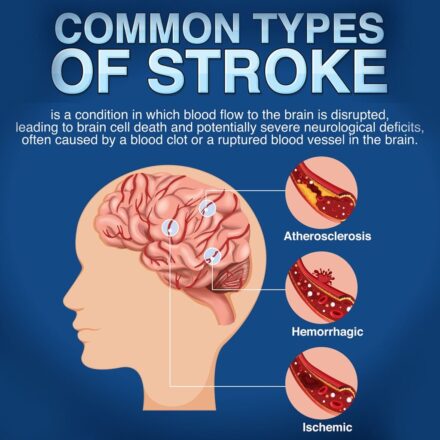Brain
How To Prevent Stroke In 9days
Stroke Risk Factors
Understanding Stroke Risk Factors is crucial in preventing stroke. By identifying the factors that increase the risk of stroke, individuals can take appropriate measures to reduce their chances of experiencing a stroke. Risk factors for stroke include high blood pressure, smoking, diabetes, high cholesterol, obesity, and a sedentary lifestyle. Understanding these risk factors allows individuals to make necessary lifestyle changes, such as maintaining a healthy weight, exercising regularly, quitting smoking, and managing chronic conditions. Additionally, understanding stroke risk factors helps healthcare professionals to provide targeted interventions and preventive strategies to at-risk individuals. By raising awareness about these risk factors, we can empower individuals to take control of their health and reduce the risk of stroke in themselves and their communities.
Maintaining a Healthy Lifestyle

Maintaining a healthy lifestyle is crucial in preventing stroke. Regular physical activity can vastly reduce the risk of stroke by improving cardiovascular health and maintaining a healthy weight. Additionally, adopting a balanced diet that is low in saturated fats, cholesterol, and sodium, while rich in fruits, vegetables, whole grains, and lean proteins, can significantly lower the risk. It is essential to avoid smoking and limit alcohol consumption as these habits can increase the chances of stroke. Managing stress through healthy coping mechanisms such as exercise, meditation, or engaging in hobbies can also contribute to stroke prevention. Besides, regularly monitoring and controlling blood pressure, cholesterol levels, and diabetes, if applicable, are important measures to mitigate the risk of stroke. By implementing these lifestyle choices and maintaining overall cardiovascular health, the risk of stroke can be significantly reduced.
Recognizing Warning Signs and Symptoms
Recognizing Warning Signs and Symptoms: Prompt recognition of warning signs and symptoms is crucial in preventing stroke. Familiarizing oneself with the common signs such as sudden numbness or weakness, confusion, difficulty speaking or understanding, and severe headache can aid in prompt action. Other warning signs may involve sudden trouble seeing, dizziness, or loss of balance and coordination. Acting quickly is essential as early intervention can significantly minimize the impact of a stroke. It is vital to educate oneself and others on these warning signs to ensure immediate medical attention, potentially saving lives and preventing long-term disability caused by strokes.
Seeking Medical Help and Treatment Options
When it comes to seeking medical help and treatment options for stroke prevention, there are several key aspects to consider. Firstly, it is crucial to understand the risk factors associated with stroke, such as high blood pressure, diabetes, and heart disease. Regular check-ups and discussions with healthcare professionals can help identify and manage these risk factors effectively. Additionally, certain lifestyle modifications and medications may be recommended to reduce the risk of stroke, including maintaining a healthy diet, exercising regularly, and taking prescribed medications as directed. It is also important to recognize the warning signs and symptoms of stroke, such as sudden weakness or numbness in the face, arm, or leg, and seek immediate medical attention if they occur. By promoting awareness and education about the importance of early intervention and adopting preventive measures, we can significantly reduce the incidence of stroke and its devastating consequences.
Promoting Stroke Awareness and Education
Promoting Stroke Awareness and Education is a crucial component in preventing stroke. By raising public awareness about the risk factors and symptoms of stroke, individuals can become better equipped to recognize the warning signs and take prompt action. Educational initiatives can emphasize the importance of maintaining a healthy lifestyle, including regular exercise, a balanced diet, and managing chronic conditions such as high blood pressure and diabetes. Additionally, promoting stroke awareness can encourage individuals to seek medical help and explore available treatment options at the earliest signs of stroke. By disseminating knowledge and empowering individuals with the necessary information, preventive measures can be taken to reduce the incidence of stroke and its potentially devastating consequences
LOOKING FOR NATURAL ORGANIC PRODUCTS TO PREVENT STROKE OR TREAT IT? THEN CLICK ON THE IMAGE BELOW.

FOR MORE INFORMATION AND ASSISTANCE CLICK ON THE CALL SIGH BELOW.


